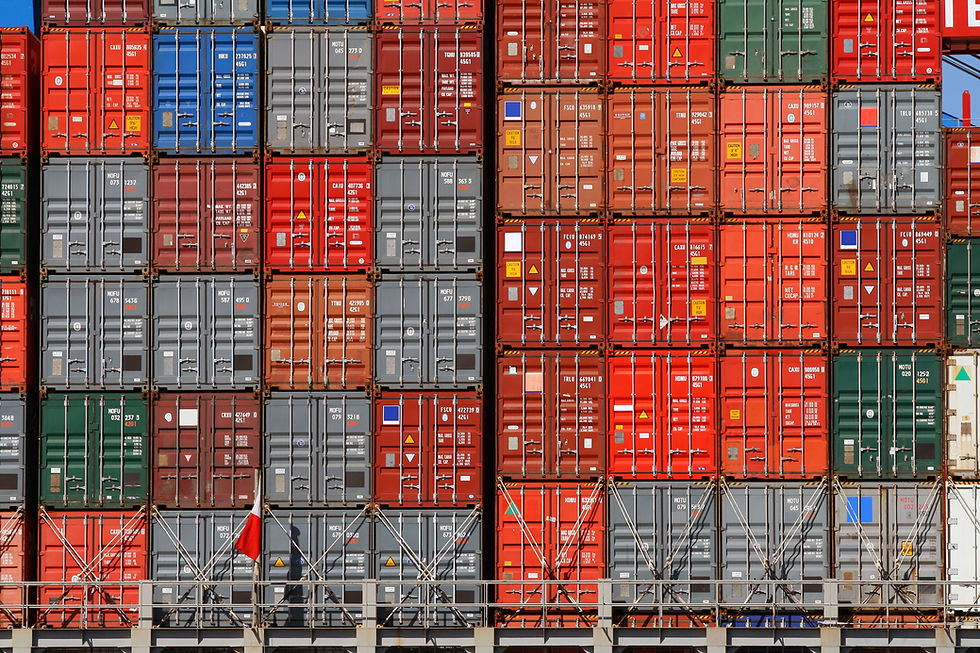Section 301 China Tariff Increase - Effective May 10, 2019
- clarkespositolaw

- May 22, 2019
- 3 min read

What is the Impact of the Latest Round of the China Tariffs Increase by the Trump Administration?
On May 10, 2019, a round of tariff increases representing $200 billion USD in imports from China went into effect. This means that the already-existing import tax, known as a “customs duty” has increased by 25% on certain goods manufactured in China, which are exported from China and imported in to the United States. The impact of this additional 25% increase, which is calculated as a percentage of the value of imported merchandise, is illustrated in the following example.
IMPORT COSTING EXAMPLE BEFORE 5/10/19:
Box of coils - $10 value
+ Duty Rate – FREE
Old Cost to Enter - $10 in customs duties
IMPORT COSTING EXAMPLE AFTER 5/10/19:
Box of coils - $10 value
+ Duty Rate – FREE
+ Additional Duty Rate - 25%
New Cost to Enter - $12.50 in customs duties ($2.50 = 25% of $10)
As shown by the above example (which is, in fact, an example of an actual increase), even products for which there had been a 0% or FREE rate of duty previously, it too is now subject to this additional increase in customs duties.
Products subject to this additional tax are determined based upon its “tariff classification number,” which under the American rules is a unique 10-digit code used to classify every type of product imported into the country.
What, if Anything, Can Importers Do For Relief From This New Tariff Increase?
Like with prior increases, importers affected by these increases can request that their products subject to certain tariff numbers be excluded from payment of the additional duties. While we remain awaiting instructions on how to submit such requests, the US Trade Representative’s Office has stated it will be opening up a portal for doing so. As soon as we have information on this, we will publish an update.
Background Information on the Section 301 Investigation
Section 301 of the Trade Act of 1974 is an enforcement clause in the Trade Act that authorizes the President of the United States to respond with appropriate action, including retaliation, against any U.S trading partner regarding any act, policy, or practice utilized by a foreign government that falls into any of the following three criteria*:
Trade agreement violations;
Acts, policies or practices that are unjustifiable (defined as those that are inconsistent with U.S. international legal rights) and that burden or restrict U.S. commerce; and
Acts, policies or practices that are unreasonable or discriminatory and that burden or restrict U.S. commerce.
The current investigation into Chinese violations of Section 301 was initiated by the Office of the U.S. Trade Representative (USTR) in August of 2017 and relates mostly to the third criterion. USTR has been investigating Chinese laws, practices, and policies that require the transfer of intellectual property, innovation, and technology of American companies operating in China to the Chinese government.
A Timeline of Tariff Increases
As Section 301 allows the President to act with retaliation, President Trump enacted a series of punitive increased tariffs on Chinese imports**. The first increase became effective on July 6, 2018, and a list of 818 Harmonized Tariff Schedule of the United States (HTSUS) numbers were subject to a 25% tariff increase. This was “Tranche 1” of the tariff increases and represents $34 billion USD of imports from China.
A second list of 279 HTSUS numbers subject to 25% tariff increase became effective on August 23, 2018. This was “Tranche 2” and represents $16 billion USD of imports from China.
A third list of 5,745 HTSUS numbers became subject to a 10% increased tariff on September 24, 2018, and the additional duties were scheduled to increase to 25% on January 1, 2019 but had been delayed until now, when this additional duty payment became effective on May 10, 2019 at 12:01 AM EST. This is “Tranche 3” and represents $200 billion USD in imports from China.
The U.S. Customs and Border Security (CBP) is now enforcing this tariff increase.
If you have any questions about the Section 301 Tariff Increase, please feel free to send us a message through the Contact Form on the Home page!
References:
* Office of the United States Trade Representative, Executive Office of the President: Findings of the Investigation into China’s Acts, Policies, and Practices Related to Technology Transfer, Intellectual Property, and Innovation Under Section 301 of the Trade Act of 1974.
** U.S. Customs and Border Protection: Section 301 Trade Remedies to be Assessed on Certain Products from China.
.png)







Comments